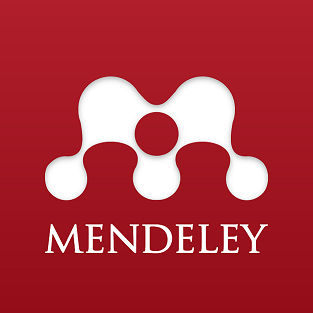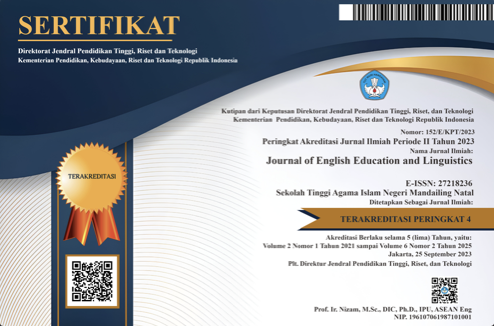Upgrading Speaking Ability Through Peer Teaching Technique
DOI:
https://doi.org/10.56874/jeel.v1i1.47Keywords:
Peer teaching technique, Speaking abilityAbstract
This research focus in eighth grade is VIII A and VIII B. the researcher used Peer teaching technique to prove that students taught to use Peer teaching technique better and positively affect students' speaking ability than students taught by using Ordinary way in the eighth grade at SMP 1 Teluk Bayur, the specifics problems discussed in the following formulated questions; (1) What is the students’ performance of pretest and posttest between control and experimental groups?, (2) Is there any significant difference between pretest and posttest performance of the control and experimental groups? This research used Experimental method. This research was conducted from February 22th 2019 to 25th March 2019 in second grade at SMPN 1 Teluk Bayur. The research using Peer teaching technique to improve students’ speaking ability. The Instrument’s research is test, in the test there are Pre-test, treatment and Post-test. Data analysis was scoring, normality, homogeneity, finding mean, and demonstrated T-Test.
References
Arikunto, Suharsimi, (2006). Prosedur Penelitian : suatu pendekatan praktek. Jakarta: PT.
Rineka Cipta
Antonio S. Broto. (2001). “Statistic Made Simple”, 2nd edition. (National Bookstore).
Brown, H. Douglas. (2000). Principles of Language Learning and Teaching. San Francisco: San Francisco State University.
Accessed in 26 October 2018 in http://www.researchgate.net/profile/zainab_Jaafar Larsen, Diane, Freeman. (1986). Techniques and Principles in Language Teaching: Oxford University Press.
Pinker, S. (1994). The language instinct : How the Mind Creates Language. New York: Harper Collins Pub.
Rubin, L.A.H.C.1998. Model for Active Learning collaborative Peer Teaching.
Richey, R. W. (1912). Planning for teaching an introduction to education. California: department of education Saint Mary’s College.
Rubin, L.A.H.C.1998. Model for Active Learning collaborative Peer Teaching.
Wright, 1976: 228). said that it “attracts students interest motivation, stimuli to involve in
teaching learning process without any doubtless”
Downloads
Published
Issue
Section
License
All articles published in the Journal of English Education and Linguistics are licensed under a Creative Commons Attribution-ShareAlike 4.0 International (CC BY-SA) license. This means anyone is free to copy, transform, or redistribute articles for any lawful purpose in any medium, provided they give appropriate attribution to the original author(s) and Journal of English Education and Linguistics, link to the license, indicate if changes were made, and redistribute any derivative work under the same license.
Copyright on articles is retained by the respective author(s) without restrictions. A non-exclusive license is granted to the Journal of English Education and Linguistics to publish the article and identify itself as its original publisher, along with the commercial right to include the article in a hardcopy issue for sale to libraries and individuals.
Although the conditions of the Creative Commons Attribution-ShareAlike 4.0 International (CC BY-SA) license do not apply to authors (as the copyright holder of your article, you have no restrictions on your rights), by submitting to the Journal of English Education and Linguistics, authors recognize the rights of readers and must grant any third party the right to use their articles to the extent provided by the license.

This work is licensed under a Creative Commons Attribution-ShareAlike 4.0 International License.








